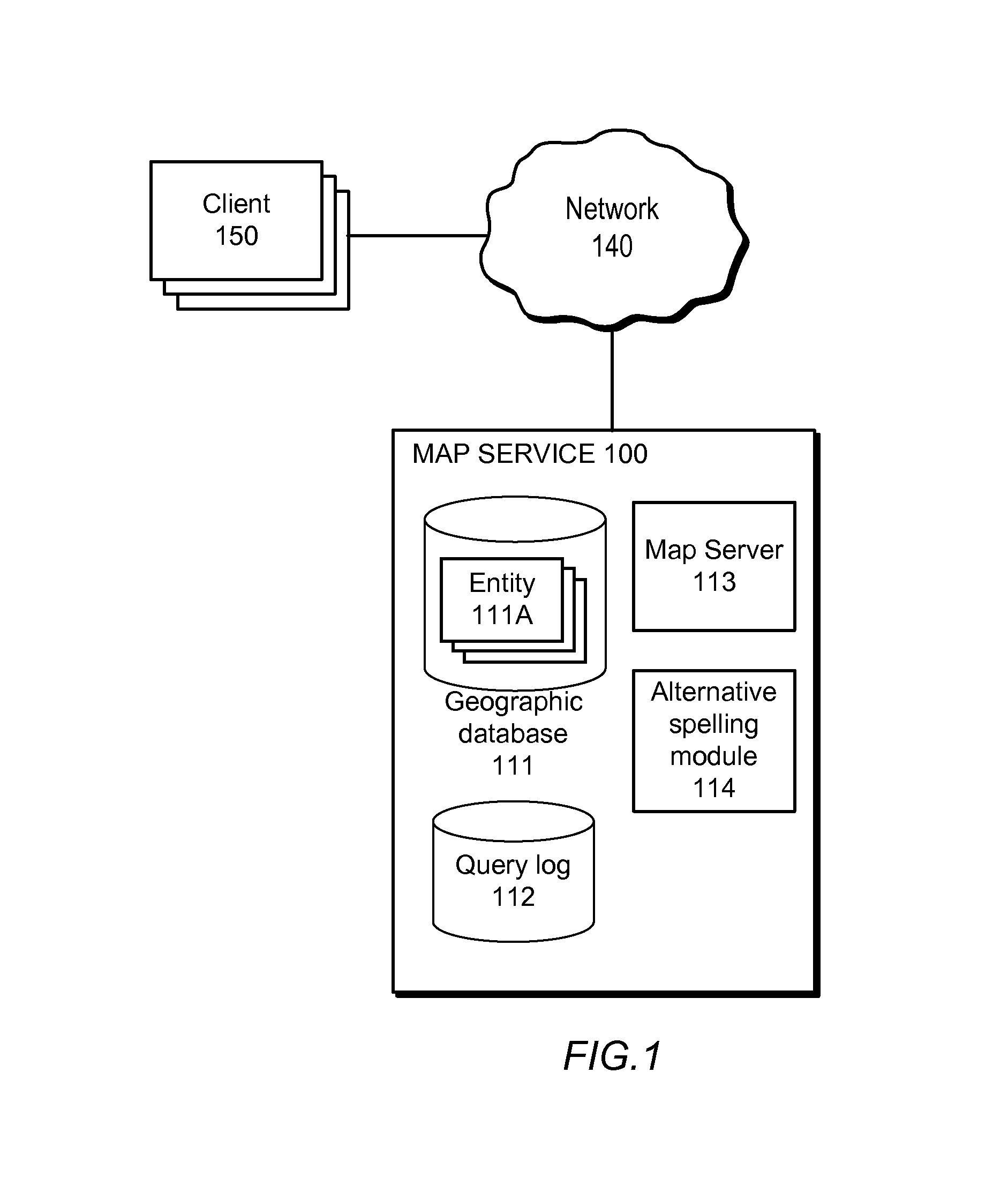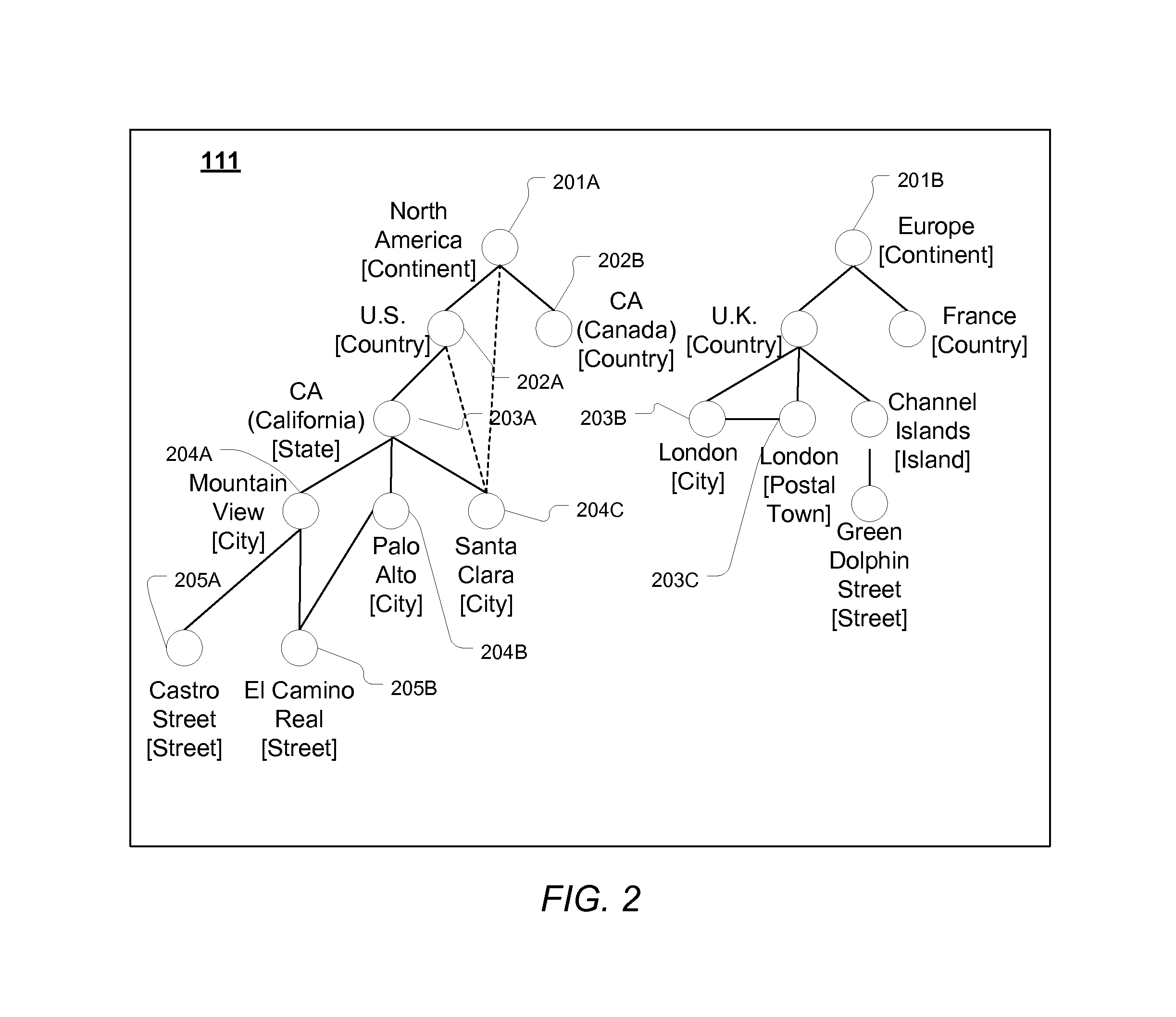Training a probabilistic spelling checker from structured data
a technology of structured data and probability, applied in the field of data processing, can solve the problems of not being practicable in other domains, not being able to create useful language models for domains, and users of computer systems input misspelled data, etc., and achieve the effect of large number of valid word combinations
- Summary
- Abstract
- Description
- Claims
- Application Information
AI Technical Summary
Benefits of technology
Problems solved by technology
Method used
Image
Examples
Embodiment Construction
System Architecture
[0016]FIG. 1 is a block diagram of a system in which alternative spelling analysis can be performed, according to one embodiment. The alternative spelling analysis provided by various embodiments can be performed for structured data—i.e., data that has well-defined semantics—in many different domains. However, for purposes of example, FIG. 1 sets forth a specific example in the domain of geographical data employed by a geographic information and mapping system. A map service 100 represents a system such as that of GOOGLE MAPS that stores and provides map data to clients such as the client devices 150 over a network 140.
[0017]Client devices 150 are computing devices that execute client software, e.g., a web browser or built-in client application, to connect to the map server 113 of the map service 100 via a network 140 and to display map data. The client device 150 might be, for example, a personal computer, a personal digital assistant, a cellular, mobile, or smar...
PUM
 Login to View More
Login to View More Abstract
Description
Claims
Application Information
 Login to View More
Login to View More - R&D
- Intellectual Property
- Life Sciences
- Materials
- Tech Scout
- Unparalleled Data Quality
- Higher Quality Content
- 60% Fewer Hallucinations
Browse by: Latest US Patents, China's latest patents, Technical Efficacy Thesaurus, Application Domain, Technology Topic, Popular Technical Reports.
© 2025 PatSnap. All rights reserved.Legal|Privacy policy|Modern Slavery Act Transparency Statement|Sitemap|About US| Contact US: help@patsnap.com



